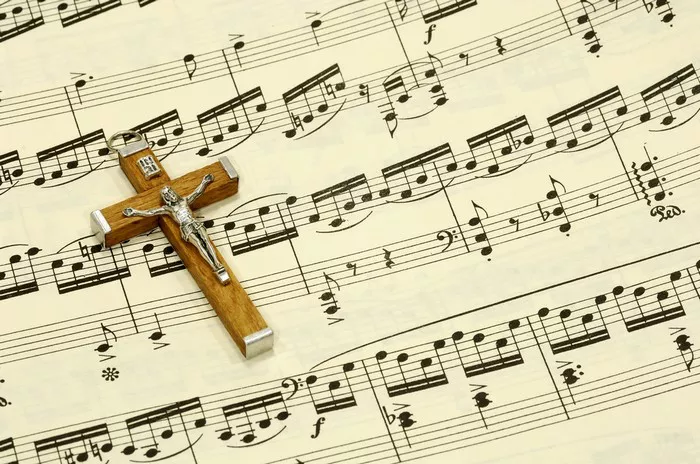In the realm of religious practice, liturgical music holds a significant place, serving as a conduit for spiritual expression, communal worship, and transcendent experiences. From the Gregorian chants of medieval monasteries to contemporary praise and worship songs, the role of music within religious ceremonies remains integral. This article explores the multifaceted importance of liturgical music within various religious traditions, delving into its historical significance, psychological impact, theological implications, and practical applications.
Historical Significance of Liturgical Music
The roots of liturgical music trace back to ancient religious rituals, where music played a central role in worship practices. In Christianity, early Christian communities incorporated elements of Jewish liturgical music into their gatherings, eventually developing distinct forms of chant and hymnody. The Gregorian chant, named after Pope Gregory I, became emblematic of medieval liturgical music, characterized by its monophonic texture and modal melodies. Throughout the Middle Ages and Renaissance, polyphonic compositions by composers like Palestrina and Bach enriched liturgical repertoires, showcasing the marriage of artistic expression and religious devotion.
Similarly, liturgical music holds significance in other religious traditions such as Judaism, Islam, Hinduism, and Buddhism, each with its unique musical styles and practices. For instance, Jewish liturgical music encompasses a rich tradition of cantillation and synagogue melodies, enhancing prayer services and rituals. In Islam, the recitation of Quranic verses with melodic embellishments, known as Tajweed, elevates the spiritual experience of worshipers during prayers. Across diverse cultural and religious contexts, liturgical music reflects the historical, cultural, and theological dimensions of faith communities.
Psychological Impact of Liturgical Music
Beyond its historical roots, liturgical music exerts a profound psychological impact on worshipers, influencing emotions, cognition, and behavior. Research in psychology and neuroscience underscores the power of music to evoke strong emotional responses and modulate mood states. In the context of religious rituals, music serves as a catalyst for spiritual experiences, fostering a sense of awe, reverence, and transcendence among participants.
Studies have shown that certain musical elements, such as tempo, harmony, and melody, can elicit specific emotional states, ranging from introspection to ecstasy. In liturgical settings, hymns, chants, and anthems are carefully selected to complement the thematic content of religious texts and enhance the worship experience. Whether through solemn Gregorian chants or jubilant gospel songs, liturgical music has the ability to evoke a wide range of emotions, from penitence and contrition to joy and celebration.
Moreover, the communal aspect of liturgical music fosters a sense of unity and belonging among worshipers, as they join their voices in collective praise and adoration. Group singing has been shown to promote social bonding and cohesion, fostering a sense of shared identity and solidarity within religious communities. Through congregational participation in hymnody and choral singing, individuals experience a profound sense of connection with one another and with the divine, transcending individual differences and barriers.
Theological Implications of Liturgical Music
From a theological perspective, liturgical music serves as a vehicle for theological expression, conveying doctrinal truths, spiritual insights, and moral values through melody and lyrics. In Christian theology, hymns and anthems often reflect key theological themes such as salvation, redemption, grace, and divine sovereignty. Through the repetition of sacred texts and musical motifs, liturgical music reinforces theological concepts and fosters spiritual formation among believers.
Moreover, liturgical music plays a crucial role in shaping religious identity and fostering a sense of continuity with tradition. Hymns and chants passed down through generations serve as a link to the past, connecting worshipers with the beliefs, practices, and experiences of their forebears. By preserving and transmitting the musical heritage of faith communities, liturgical music contributes to the continuity and vitality of religious traditions, ensuring that timeless truths are passed on to future generations.
Furthermore, liturgical music can serve as a form of prophetic witness and social critique, challenging injustices and calling attention to pressing moral issues. Through hymns and spirituals, oppressed communities have expressed their longing for freedom, justice, and equality, inspiring movements for social change and liberation. The prophetic power of liturgical music lies in its ability to give voice to the voiceless, to inspire courage and resilience in the face of adversity, and to galvanize collective action for the common good.
Practical Applications of Liturgical Music
In addition to its theological and psychological dimensions, liturgical music has practical applications within religious communities, facilitating worship services, religious education, and pastoral care. Music directors and worship leaders play a crucial role in selecting appropriate repertoire, arranging musical accompaniments, and coordinating rehearsals to ensure the smooth flow of worship services. Through their creative leadership, they strive to create an atmosphere conducive to prayer, meditation, and spiritual reflection.
Moreover, liturgical music serves as a pedagogical tool for religious education, helping to instill religious values, teach biblical narratives, and cultivate spiritual disciplines among believers. Children’s choirs, youth ensembles, and adult vocal groups provide opportunities for musical instruction and spiritual formation, nurturing the next generation of worship leaders and musicians.
What’s more, liturgical music plays a therapeutic role in pastoral care, offering solace, comfort, and healing to individuals facing illness, grief, or adversity. Music therapy interventions, such as guided imagery, improvisation, and songwriting, can help individuals process their emotions, express their faith, and find meaning and hope in times of crisis. Whether through hymns of lamentation or songs of praise, liturgical music has the power to minister to the human spirit and bring healing and wholeness to broken lives.
Conclusion
Liturgical music occupies a central place within religious worship, serving as a means of spiritual expression, communal bonding, and theological reflection. Its historical roots, psychological impact, theological significance, and practical applications underscore its importance in shaping the religious experiences of believers across diverse traditions. As we continue to explore the transformative power of music in worship and spirituality, may we recognize and cherish the enduring legacy of liturgical music in enriching our lives and deepening our faith.
























